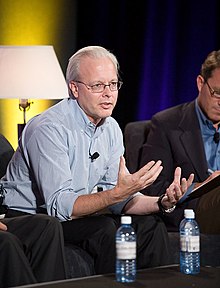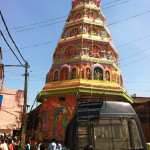1st complete computer model of an organism produced
In a breakthrough effort for computational biology, the world’s first complete computer model of an organism has been completed by Stanford researchers.
The team is led by Markus W.Covert, assistant professor of bioengineering and consists of
- Jonathan R. Karr
- Jayodita C. Sanghvi
- Derek N. Macklin
- Miriam V. Gutschow
- Jared M. Jacobs
- Benjamin Bolival Jr.
- Nacyra Assad-Garcia
- John I. Glass
Their paper titled A Whole-Cell Computational Model Predicts Phenotype from Genotype is published in Cell Journal
They used data from more than 900 scientific papers to account for every molecular interaction that takes place in the life cycle of Mycoplasma genitalium, the world’s smallest free-living bacterium.

Source : Cell Journal
Mycoplasma genitalium is a humble parasitic bacterium known mainly for showing up uninvited in human urogenital and respiratory tracts. But the pathogen also has the distinction of containing the smallest genome of any free-living organism – only 525 genes, as opposed to the 4,288 of E. coli, a more traditional laboratory bacterium.
Even at this small scale, the quantity of data that the Stanford researchers incorporated into the virtual cell’s code was enormous. The final model made use of more than 1,900 experimentally determined parameters.
The researchers modeled individual biological processes as 28 separate “modules,” each governed by its own algorithm. These modules then communicated to each other after every time step, making for a unified whole that closely matched M. genitalium’s real-world behavior.
The purely computational cell opens up procedures that would be difficult to perform in an actual organism, as well as opportunities to reexamine experimental data. In the paper, the model is used to demonstrate a number of these approaches, including detailed investigations of DNA-binding protein dynamics and the identification of new gene functions. The program also allowed the researchers to address aspects of cell behavior that emerge from vast numbers of interacting factors.
Several findings can be made from virtual model. These remain hypotheses until they’re confirmed by real-world experiments, but they promise to accelerate the process of scientific inquiry.
Much of the model’s future promise lies in more applied fields.
- CAD – computer-aided design – has revolutionized fields from aeronautics to civil engineering by drastically reducing the trial-and-error involved in design. But our incomplete understanding of even the simplest biological systems has meant that CAD hasn’t yet found a place in bioengineering.
- Computational models like that of M. genitalium could bring rational design to biology – allowing not only for computer-guided experimental regimes, but also for the wholesale creation of new microorganisms.
- Bio-CAD could also lead to enticing medical advances – especially in the field of personalized medicine. But these applications are a long way off, the researchers said.
- “This is potentially the new Human Genome Project,” Karr said. “It’s going to take a really large community effort to get close to a human model.”
Reference : Stanford News, Cell Journal
Sagara (577401) Marikamba Jatre
Sagara Marikamba Jatre is the largest fair in Karnataka State of India. Its held once in three years. The Fair has started on 22-FEB-2011 and will end on 02-MAR-2011.
Nearly ten lakh (1 million) visitors are expected in Sagar during the festival, which will conclude with an impressive procession on the last day [TOI Report]
Sagara Marikamba Temple
SAGAR (means ocean in Sanskrit) is Taluk (town) and divisional headquarters in Karnataka state of INDIA. Its located in the shimoga district. Its around 360 kms away from Bangalore, the Silicon Valley of the East.
World Economic Forum Davos – Live 2011 and useful Links
The annual meeting of the World Economic Forum in Davos-Klosters (Swiss ski resort) is a gathering of global leaders from many fields and provides a rethinking of our systems and exploration of strategies and solutions that have positive transformational implications. Particular emphasis will be placed on addressing the question of “How”, going beyond analysis and elaborating innovative ideas and solutions to key global challenges.
41st annual meeting, WEF 2011 will begin on 26-JAN and the theme is “Shared Norms for a New Reality.”
You can watch the Live stream of the WEF 2011 events below
Other useful Links
- YouTube: The Davos Question, WorldEconomicForum
- Official Blog – forumblog.org
- Twitter official accounts @WEF, @davos
- FLICKR
- FriendFeed
- Wikipedia article on WEF
World’s first Samskrita (Sanskrit) Book Fair
The first ever World Samskrita (Sanskrit) Book Fair is in progress at Bengaluru (Bangalore) during January 7-11, 2011 (Friday thru Monday). The details of the Book Fair is at http://www.samskritbookfair.org/about.
The venue is the National College ground, Basavanagudi, BENGALURU (BANGALORE), Karnataka, INDIA. There is a live-webcast as well at http://www.samskritbookfair.org/home/webcast
The fair and conference is organised by Samskrita Bharati .With over 100 exhibitors from India and abroad and lakhs of participants, the event is set to give both the language and its literature a huge boost. The book fair’s objective is to create a market for Samskrita publications, both classic works and contemporary writing, and to help popularise the language.
Samskrita is a world’s oldest language and is basis of several world’s languages. English too has several words with roots in Sanskrit. (Mother from Matru, Father from Pitru, Brother from Brathru, Daughter from Dhatri, Name from Naamdheyam, etc)
Microsoft patents touchscreen of tomorrow
Microsoft has filed a patent last week with the U.S. patent office for a tactile display technology it calls a “Light-Induced Shape-Memory Polymer Display Screen.” Some have termed this “touchscreen of tomorrow“. Such a display could generate small ridges and textures on its surface. For instance, the display could provide a virtual keyboard that could give users the feel of an actual keyboard, the patent application states. To make this happen, the display itself would contain a “topography-changing layer” comprised of something called shape-memory polymers, which change shape depending on the ultraviolet light signal received. The system would require a topography-changing engine to supply the light signals.
Whereas previous screens produced only an illusion of texture, Microsoft proposes producing a real texture, using pixel-sized shape-memory plastic cells that can be ordered to protrude from the surface on command.
Vibrotactile displays (displays that use voltages of different frequencies, applied to a grid below the touchscreen, to trick our fingertips into experiencing a wide variety of touch sensations) are screens which produce only an illusion of texture. Examples are
- Nokia has developed a prototype of its N900 smartphone that lets you feel the texture of icons on the screen – a technology that would add a whole new dimension to touchscreen apps. The technology is based on an effect called electrovibration, in which touch receptors in the skin can be fooled into perceiving texture when you swipe a fingertip across an insulating layer above a metal surface carrying an alternating voltage. The higher the frequency of that alternating voltage, the smoother the texture feels.
- TeslaTouch
- Senseg
New Scientist in article mentions that Microsoft’s named inventor, Erez Kikin-Gil ( a Microsoft senior user experience designer)at the firm’s Redmond campus in Washington state, says in the patent that the idea is aimed at large table-sized computing displays such as the company’s Surface, rather than phones or tablets.
Microsoft Surface is a revolutionary multi-touch computer that responds to natural hand gestures and real-world objects, helping people interact with digital content in a simple and intuitive way. With a large, horizontal user interface, Surface offers a unique gathering place where multiple users can collaboratively and simultaneously interact with data and each other.
The British Monarchy to launch account on facebook
The Queen is set to have an official presence on Facebook when The British Monarchy page launches on the internet-based social networking site. The Facebook page is due to go live from Monday morning reports BBC (Sun 07-Nov-2010).
The launch of the Facebook page follows the introduction of the Monarchy’s Flickr account earlier this year. It also joined Twitter in 2009 and established a Royal Channel on YouTube in 2007. The official website of the British Monarchy has as special page titled “The Royal Family and Technology”
Preview the facebook page The British Monarchy, today at http://www.facebook.com/pages/The-British-Monarchy/12744088641
Happy Deepavali
Best wishes to all on the occasion of Deepavali. May the festival of lights bring all of us peace, joy and prosperity.
US President Barack Obama’s Diwali message
Checkout the BBC Broadcast on Deepavali
FIS (Systematics, Alltel, Metavante) acquires Capco
FIS™ (NYSE: FIS), one of the world’s largest global providers dedicated to banking and payments technologies, announced that it has signed a definitive agreement to acquire Capco, a global business and technology consultancy dedicated solely to the financial services industry.
Details of the press release are at http://www.capco.com/content/press-release-10192010
FIS (Fidelity Information Services) was founded in 1968 as Systematics™ and, through its core processing system of the same name, quickly became a globally recognized provider of technology solutions for financial institutions. ALLTEL Information Services acquired Systematics.In 2003, Santa Barbara, Calif.-based title insurance giant Fidelity National Financial® bought the financial services division of ALLTEL Information Services and renamed it Fidelity Information Services.
In 2009, it had acquired Metavante.
Signification of this moment is 20-10-2010 20:10:20 (DD-MM-YYYY hh:mm:ss UK time)
The significance of the moment is 20-10-2010 20:10:20 (DD-MM-YYYY hh:mm:ss UK time).
In this century we have two more such occurrances
20-11-2011 20:11:20
20-12-2012 20:12:20
Microsoft Chief Architect Ray Ozzie resigns
 Ray Ozzie, Microsoft’s Chief Software Architect & proponent of cloud computing, resigns.
Ray Ozzie, Microsoft’s Chief Software Architect & proponent of cloud computing, resigns.
Heralded as one of the world’s great programmers, Mr. Ozzie is also well known as creator of Lotus Notes & founder of Groove networks.
Microsoft shares drop 2.2% in after-hours trading on the news.


